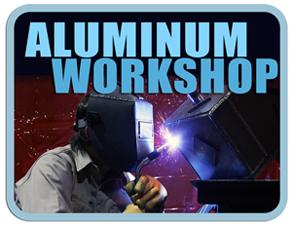President
- FMA
- The Fabricator
- FABTECH
- Canadian Metalworking
Categories
- Additive Manufacturing
- Aluminum Welding
- Arc Welding
- Assembly and Joining
- Automation and Robotics
- Bending and Forming
- Consumables
- Cutting and Weld Prep
- Electric Vehicles
- En Español
- Finishing
- Hydroforming
- Laser Cutting
- Laser Welding
- Machining
- Manufacturing Software
- Materials Handling
- Metals/Materials
- Oxyfuel Cutting
- Plasma Cutting
- Power Tools
- Punching and Other Holemaking
- Roll Forming
- Safety
- Sawing
- Shearing
- Shop Management
- Testing and Measuring
- Tube and Pipe Fabrication
- Tube and Pipe Production
- Waterjet Cutting
Industry Directory
Webcasts
Podcasts
FAB 40
Advertise
Subscribe
Account Login
Search
Aluminum Workshop: Is aluminum ductile or brittle?
- By Frank Armao
- Updated August 8, 2023
- December 3, 2014
- Article
- Aluminum Welding
Q: In many cases, when I qualify welding procedure specifications (WPS) for steel, I am required to perform testing of Charpy V-notch (CVN) samples, but I’m never required to test Charpy samples for aluminum welding procedures. Why not?
A: Charpy V-notch samples are used to determine a material’s toughness, that is, whether the material is ductile or brittle in the presence of a notch. This is done by taking a standard sample with a notch machined into it, impacting the sample so the tip of the notch is in tension, and measuring the energy absorbed to fracture the sample. Samples that are ductile absorb a lot of energy. Samples that are brittle absorb little energy. Depending on the filler alloy used, the details of the welding procedure, and the testing temperature, steels can exhibit either ductile or brittle behavior. Needless to say, brittle behavior is undesirable, and the CVN test tries to screen out a WPS that would lead to brittle behavior.
All steels are ferritic, body-centered, cubic materials. While they will fracture in a ductile manner at room temperature, as the temperature is reduced you will eventually reach a temperature (actually a narrow range of temperature) at which fracture behavior becomes brittle. This is called the ductile-brittle transition temperature (DBTT). The DBTT is different for each type of steel. In general, the DBTT becomes lower (this is good) as alloys such as Ni, Cr, and V are added to the steel and as the microstructure is improved.
Charpy V-notch Testing and Aluminum
Aluminum is different. As a face-centered cubic material, it has no DBTT. As the temperature is lowered, aluminum becomes stronger but remains ductile. In fact, aluminum alloys are ductile even at liquid helium temperatures (-425 degrees F). That’s why aluminum alloys are used so often in fabricating cryogenic equipment. The work establishing the toughness of aluminum alloys, and aluminum welds, was performed in the 1950s and 1960s. Ever since then no fabrication code requires Charpy samples to be performed on aluminum alloys or aluminum welds.
In fact, Charpy testing is not only irrelevant, it also can be misleading for aluminum alloys and welds. Because of the details of the Charpy test, tests on aluminum usually show very low values. This does not mean the aluminum is brittle, only that the test doesn’t perform well on aluminum. There is a standard toughness test for aluminum alloys and welds. It’s called the Kahn tear test. Its use and interpretation are documented in the ASTM B871 specification.
About the Author

Frank Armao
Aluminum Consulting Inc.
440-479-0239
About the Publication
Related Companies
subscribe now

The Welder, formerly known as Practical Welding Today, is a showcase of the real people who make the products we use and work with every day. This magazine has served the welding community in North America well for more than 20 years.
start your free subscription- Stay connected from anywhere

Easily access valuable industry resources now with full access to the digital edition of The Fabricator.

Easily access valuable industry resources now with full access to the digital edition of The Welder.

Easily access valuable industry resources now with full access to the digital edition of The Tube and Pipe Journal.
- Podcasting
- Podcast:
- The Fabricator Podcast
- Published:
- 04/16/2024
- Running Time:
- 63:29
In this episode of The Fabricator Podcast, Caleb Chamberlain, co-founder and CEO of OSH Cut, discusses his company’s...
- Industry Events
16th Annual Safety Conference
- April 30 - May 1, 2024
- Elgin,
Pipe and Tube Conference
- May 21 - 22, 2024
- Omaha, NE
World-Class Roll Forming Workshop
- June 5 - 6, 2024
- Louisville, KY
Advanced Laser Application Workshop
- June 25 - 27, 2024
- Novi, MI
































